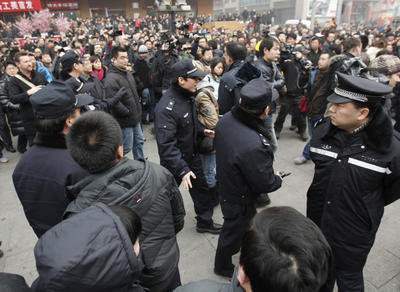According to the relevant stipulations in the country’s Constitution and the Organic Law of Local People’s Congresses and Local People’s Governments, candidates for the head of towns and townships are first nominated by the presidiums of town’s people’s congresses or jointly nominated by deputies, and then put to vote and elected by the congress. In reality, however, joint nominations are very rare.
By the mid- to late 1990s, this system for electing town heads, in which the nomination process was directed by the presidiums of towns’ people’s congresses, was no longer suitable for what China needed for its social and political development. It was also at loggerheads with the trend of democratic development at the grassroots level in rural China. New features in the election processes of townships in Sichuan, Guangdong, Shanxi and other provincial areas reveal that this deficiency has been addressed, and indicate a new stage in the country’s political democratisation.
Several different approaches can be observed in the practice of township head elections across China. Representatives of local people’s congresses have a much stronger role than they did previously, with deputies directly nominating candidates for town head. This is exemplified by elections in the Mianyang municipality of Sichuan province. Alternatively, the will of the constituency may be more influential, with constituents directly electing their town heads. This is the scenario that played out in the Buyun township election that took place in the Shizhong district of the municipality of Suining, Sichuan province. A third approach, introduces the participation of the constituency into the present electoral framework, encouraging people to get involved in nominating candidates. This approach, which is most prevalent in the ‘open selection’ electoral system of Shizhong district, shows signs of influence from the reform practices of open assessment and appointment of leading party officials, and reforms in the party personnel system. There are two more examples worth mentioning: the model of ‘three rounds and two votes’ that was adopted in the Dapeng town of the municipality of Shenzhen, and the ‘two votes’ model adopted by Zhuoli, a town in Linyi county, Shanxi province. The first of these was adopted because of the influence of the electoral practice of ‘two votes’ in party branches in rural areas. One final point of interest is the ‘two recommendations and one vote’ model employed by the Yangji town in Jingshan county, Hubei province.
Some key trends are evident in the changing practices for electing township heads. The role of deputies of people’s congresses appears to be strengthening, as evidenced by the practice of deputies directly nominating candidates for township head. Similarly, the public opinion of voters is beginning to hold more sway, as evidenced by the widespread adoption of the model of direct election of township heads by the people. Election practices seem to be trending towards the active participation of voters in the nomination process of the candidates for township heads.
Throughout this period of change, the party has been in direct leadership and control of the reform process. Reform has been driven mainly by government, with a top-down approach. The objective of the reforms is to find new ways to underscore the legitimacy of party and government. Reform of election processes in many parts of the country has not broken the existing political system, but merely changed the process by which candidates are nominated and selected. This has introduced the measurement of public opinion into the process of the candidate’s nomination, so that public opinion can now play a role in the traditional political system.
In order to promote the ongoing reform of township head elections, several steps should be taken. First, local governments should be given more freedom in terms of institutional innovation, which will allow them to take specific local conditions into account. Second, in terms of the reform of the township head’s election, the top leadership of the Communist Party must continue to strengthen the function and role of deputies of people’s congresses. This will allow for further reform and improvement of representative politics, and establish an effective mechanism by which the government is responsible to the National People’s Congress (NPC), which has the power to impeach, question or remove them. Third, a mechanism needs to be designed by which selection and election politics are positively integrated with each other. That is to say, while adhering to the ongoing reforms of the system of selecting party officials, the orientation of election reforms should be directed towards the expression through voting numbers of public opinion and decisions.
Xiao Lihui is a Professor at the Department of Politics and Law at the Chinese Central Party School in Beijing.
This article was published in the most recent edition of the East Asia Forum Quarterly, ‘Governing China’.

